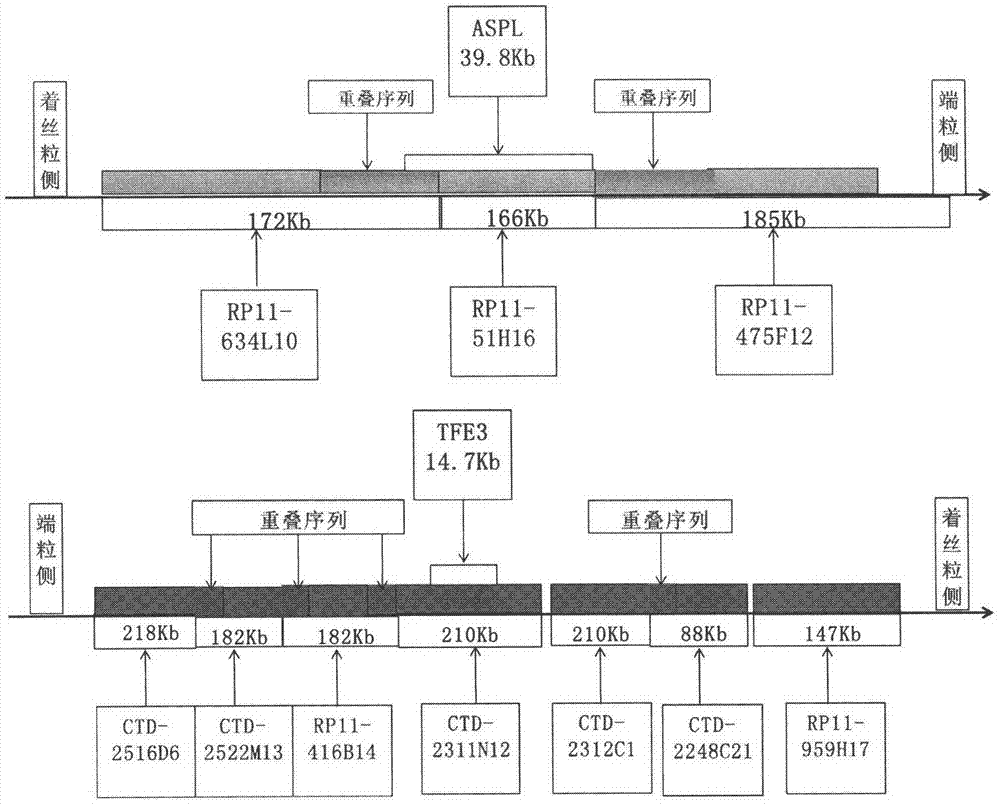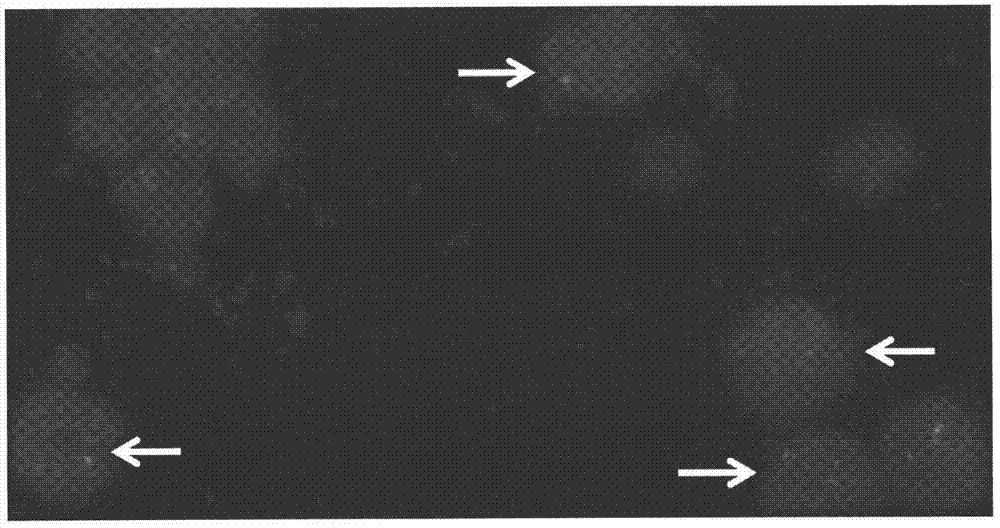Aspl‑tfe3 fusion renal cancer gene probe and its kit application
A gene probe, kidney cancer technology, applied in the application field of fluorescence in situ hybridization probes, can solve the problems of inability to accurately diagnose kidney cancer, restrict RT-PCR, and be unsuitable for wide application, and achieve high success rate and rapid diagnosis. , the effect of simple diagnosis
- Summary
- Abstract
- Description
- Claims
- Application Information
AI Technical Summary
Problems solved by technology
Method used
Image
Examples
Embodiment 1
[0041] Step 1: Preparation of Gene Probes:
[0042] Find the bacterial artificial chromosome (BAC clone) corresponding to the X chromosome TFE3 gene and ASPL gene through http: / / genome.ucsc.edu / , select the corresponding BAC clone fragments respectively, and control the complete coverage of the BAC clone fragments selected on the same side relative to the gene , and the ipsilateral fragments have a certain sequence overlap with each other or the distance is less than 10Kb. According to the above requirements, the BAC clone fragments on the ASPL gene were selected as RP11-634L10 (chr17: 79796813-79969288, the fragment length is about 172Kb), RP11-51H16 (chr17: 79931578-80097452, the fragment length is about 166Kb) and RP11-475F12 ( chr17: 80032268-80216871, the fragment length is about 185Kb); the BAC clone fragment on the TFE3 gene is CTD-2311N12 (chrX: 48713289-48923401, the fragment length is about 210Kb), CTD-2516D6 (chrX: 48265836-48484403, The fragment length is about 21...
Embodiment 2
[0054] Example 2: ASPL-TFE3 Fusion Kidney Cancer Diagnostic Kit
[0055] Gene probe kit for ASPL-TFE3 fusion kidney cancer, the kit is composed of probe hybridization solution and 4', 6-diamidino-2-phenylindole counterstaining agent, characterized in that:
[0056] (1) The combination of RP11-634L10, RP11-51H16, and RP11-475F12 located on the ASPL gene on chromosome 17, marked with a red fluorescent signal; Combination of CTD-2516D6, CTD-2312C1, CTD-2248C21 and RP11-959H17, labeled with green fluorescent signal;
[0057] (2) The probe hybridization solution is prepared by mixing the probe with Human Cot-1 DNA, hybridization buffer, and purified water in proportion, and it needs to be stored in a dark place at -20°C;
[0058] (3) 4′,6-diamidino-2-phenylindole counterstain is mainly used for nuclear staining.
[0059] The combination of RP11-634L10, RP11-51H16 and RP11-475F12 located on the ASPL gene of chromosome 17 is marked with a red fluorescent signal; located on the TFE3...
PUM
 Login to View More
Login to View More Abstract
Description
Claims
Application Information
 Login to View More
Login to View More - Generate Ideas
- Intellectual Property
- Life Sciences
- Materials
- Tech Scout
- Unparalleled Data Quality
- Higher Quality Content
- 60% Fewer Hallucinations
Browse by: Latest US Patents, China's latest patents, Technical Efficacy Thesaurus, Application Domain, Technology Topic, Popular Technical Reports.
© 2025 PatSnap. All rights reserved.Legal|Privacy policy|Modern Slavery Act Transparency Statement|Sitemap|About US| Contact US: help@patsnap.com



